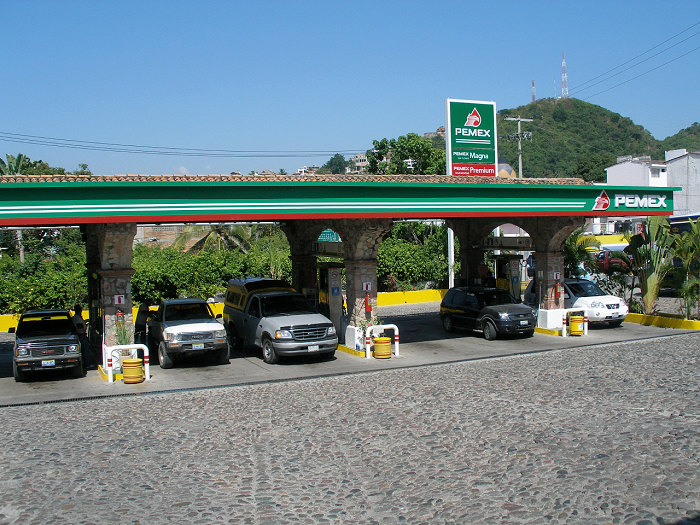 NYTimes |
NYTimes | To the Mexican people, one of the great achievements in their history was the day their president kicked out foreign oil companies in 1938. Thus, they celebrate March 18 as a civic holiday.
Yet today, that 72-year-old act has put Mexico in a straitjacket, one that threatens both the welfare of the country and the oil supply of the United States.
The national oil company created after the 1938 seizure, Pemex, is entering a period of turmoil. Oil production in its aging fields is sagging so rapidly that Mexico, long one of the world’s top oil-exporting countries, could begin importing oil within the decade.
Mexico is among the three leading foreign suppliers of oil to the United States, along with Canada and Saudi Arabia. Mexican barrels can be replaced, but at a cost. It means greater American dependence on unfriendly countries like Venezuela, unstable countries like Nigeria and Iraq, and on the oil sands of Canada, an environmentally destructive form of oil production.
“As you lose Mexican oil, you lose a critical supply,” said Jeremy M. Martin, director of the energy program at the Institute of the Americas at the University of California, San Diego. “It’s not just about energy security but national security, because our neighbor’s economic and political well-being is largely linked to its capacity to produce and export oil.”
Mexico probably still has plenty of oil, especially beneath the deep waters of the Gulf of Mexico, but Pemex lacks the technology and know-how to get it out. Inviting foreign companies into the country to help is one of the touchiest propositions in Mexican politics.
As the Mexican government struggles to find a way forward, production keeps falling.
The basic problem is simply that Mexico’s readily accessible oil is used up — pretty much the same thing that happened to the United States when production began falling in the 1970s. Output from Mexico’s giant Cantarell field, in shallow waters near the eastern shore, has plunged by 50 percent in recent years. Output at the country’s other large field is expected to begin falling in the next year or two.
Historically, oil has supplied 30 to 40 percent of the Mexican government’s revenue. Confronting a potential calamity, President Felipe Calderón has pushed through the strongest reforms he can defend politically, in hopes of attracting foreign investment. But he dare not do anything that would appear to reverse the 1938 nationalization. Even the modest reforms he has managed to pass are being challenged in court.
Officially, the government is optimistic that Mexico can reverse its decline as an oil-producing nation. But its efforts so far have yielded more rhetoric than oil.
Last year, on the day celebrating the 1938 seizure, the president’s helicopter landed in a hilly oil field outside this farming town. He announced that a new era of Mexican gushers would dawn soon.
“Under this soil,” Mr. Calderón told thousands of oil workers, lay “the richness that could propel development in our country and help Mexico accelerate our path to progress and well-being.” He promised that 20 wells would be spurting crude “very soon” from the ground on which he stood.
Almost a year later, only three wells were pumping on a recent afternoon. Eleven had been shut after producing little or no oil. In fact, the effort to develop the geologically challenging Chicontepec field here, near the gulf coast, is deteriorating into an embarrassing disaster for Pemex, the latest in a string of them.
In all, Mexican oil output has dropped from just short of 3.5 million barrels a day in 2004 to a projected average of 2.5 million barrels this year. Mexican oil exports to the United States, now 1.1 million barrels a day, have fallen by nearly a third in the last six years.
The United States Energy Department projects that Mexican production will decline by an additional 600,000 barrels a day by 2020; combined with growing domestic demand, that would probably make the country an oil importer.
In the last two years, Mexico provided about 12 percent of all crude oil imports to the United States, supplying about 8 percent of the total oil used by American refineries, according to the Energy Department.
Pemex — officially Petróleos Mexicanos — is the most important company in Mexico, employing 140,000 people. Oil money is used for everything from building schools to fighting the war against drug cartels.
“The fact that Mexico’s production is rapidly declining could potentially cause a financial crisis not only for Pemex but for the government,” said Enrique Sira, the Mexico director of IHS Cera, an energy consulting firm.













